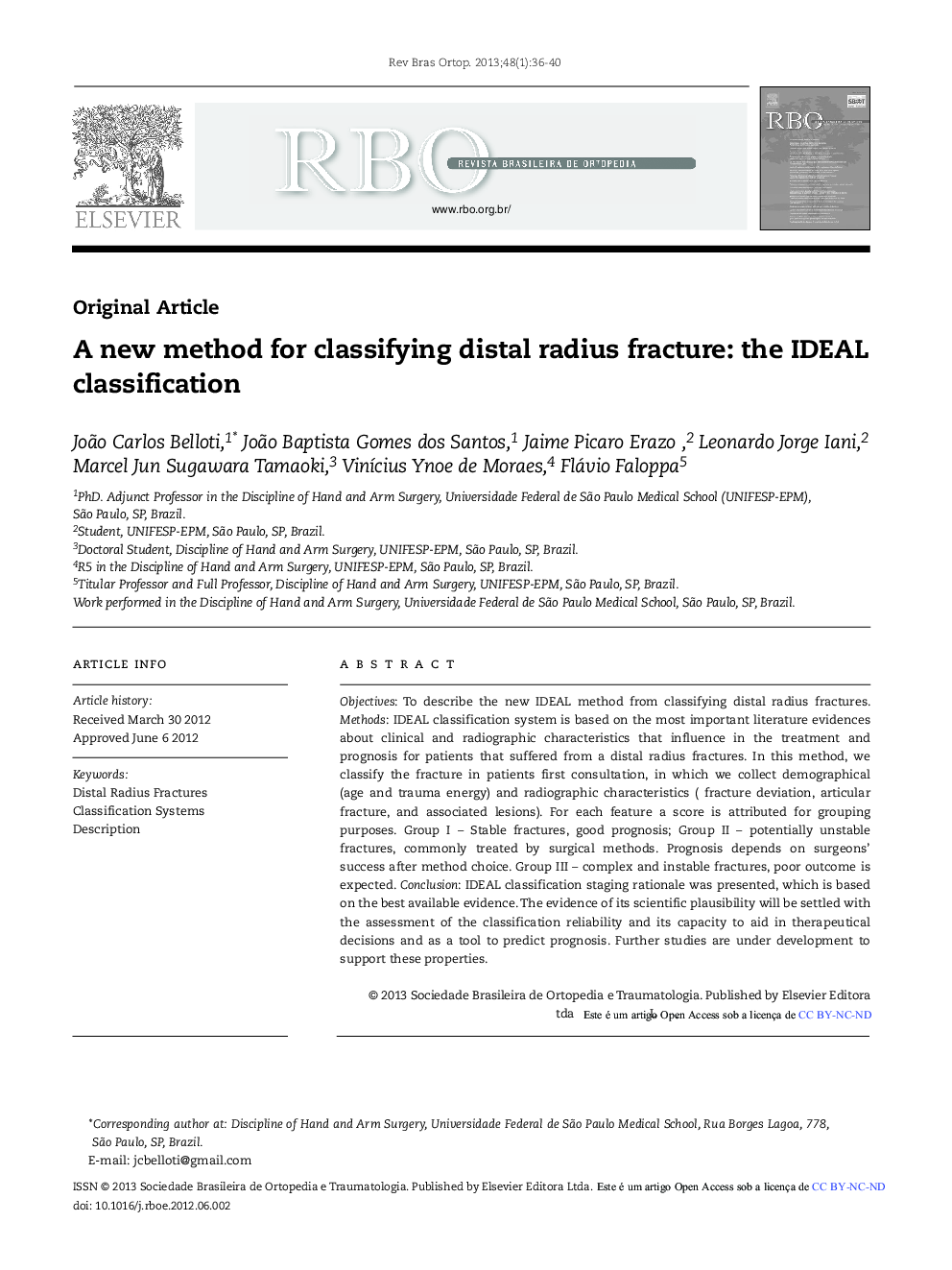| Article ID | Journal | Published Year | Pages | File Type |
|---|---|---|---|---|
| 2718330 | Revista Brasileira de Ortopedia (English Edition) | 2013 | 5 Pages |
ObjectivesTo describe the new IDEAL method from classifying distal radius fractures.MethodsIDEAL classification system is based on the most important literature evidences about clinical and radiographic characteristics that influence in the treatment and prognosis for patients that suffered from a distal radius fractures. In this method, we classify the fracture in patients first consultation, in which we collect demographical (age and trauma energy) and radiographic characteristics (fracture deviation, articular fracture, and associated lesions). For each feature a score is attributed for grouping purposes. Group I – Stable fractures, good prognosis; Group II – potentially unstable fractures, commonly treated by surgical methods. Prognosis depends on surgeons’ success after method choice. Group III – complex and instable fractures, poor outcome is expected.ConclusionIDEAL classification staging rationale was presented, which is based on the best available evidence. The evidence of its scientific plausibility will be settled with the assessment of the classification reliability and its capacity to aid in therapeutical decisions and as a tool to predict prognosis. Further studies are under development to support these properties.
